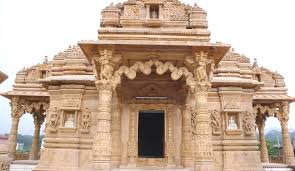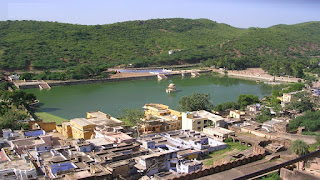Lalgarh Palace is a grand architectural marvel located in Bikaner, Rajasthan, India. It stands as a testament to the opulence and architectural prowess of the early 20th century, blending Indian, European, and Mughal architectural styles. The palace was commissioned by Maharaja Ganga Singh, the ruler of Bikaner, and named after his father, Maharaja Lall Singh.
Historical Background
Commission and Construction
Lalgarh Palace was constructed between 1902 and 1926 during the reign of Maharaja Ganga Singh. The palace was built as a replacement for the old Junagarh Palace, which had become insufficient for the royal family's needs. Maharaja Ganga Singh, known for his progressive vision, aimed to create a residence that showcased the grandeur of Bikaner while incorporating modern amenities and architectural styles.
Architect
The palace was designed by the British architect Sir Samuel Swinton Jacob, who was renowned for his expertise in Indo-Saracenic architecture—a style that blends traditional Indian elements with Gothic and Mughal influences. Jacob’s design for Lalgarh Palace seamlessly integrated these diverse styles, resulting in a structure that is both aesthetically pleasing and functional.
Architectural Features
Indo-Saracenic Style
The architecture of Lalgarh Palace is a remarkable blend of European, Mughal, and Rajput styles. The use of red sandstone gives the palace a distinctive look, while the intricate latticework (jalis), carved pillars, and elaborate domes highlight the craftsmanship of the era.
Layout and Design
The palace complex includes several wings, each designed with specific purposes. The main palace houses royal suites, dining halls, lounges, and a library. The intricate frescoes on the walls and ceilings, along with the exquisite chandeliers and antique furniture, reflect the lavish lifestyle of the royals.
Gardens and Grounds
Surrounding the palace are extensive gardens, designed in the Mughal style, featuring lush lawns, ornamental fountains, and peacocks. The well-maintained gardens provide a serene and picturesque setting, enhancing the palace's regal ambiance.
Significance and Legacy
Royal Residence
Lalgarh Palace served as the primary residence of the Bikaner royal family for many years. It was a center of administrative activities, royal ceremonies, and cultural events. The palace's halls and courtyards witnessed numerous important decisions and celebrations, contributing to its historical significance.
Museum and Hotel
In recent years, parts of Lalgarh Palace have been converted into a heritage hotel and a museum. The Shri Sadul Museum, housed within the palace, showcases a collection of artifacts, photographs, and memorabilia related to the Bikaner royal family. The hotel, managed by the royal family, offers guests a chance to experience the regal lifestyle and hospitality of Rajasthan.
Maharaja Ganga Singh: A Progressive Ruler
Maharaja Ganga Singh, under whose reign Lalgarh Palace was constructed, was a visionary leader known for his progressive policies and modernizing efforts. He played a crucial role in the development of Bikaner, implementing reforms in irrigation, education, and infrastructure. His contributions to the state earned him recognition and respect, both in India and internationally.
Cultural and Historical Importance
Architectural Heritage
Lalgarh Palace stands as a symbol of Bikaner’s rich architectural heritage. Its design and construction reflect the fusion of different cultural influences, showcasing the diversity and creativity of the era. The palace is a prime example of the Indo-Saracenic style, which gained popularity during the British colonial period in India.
Tourist Attraction
Today, Lalgarh Palace is a major tourist attraction, drawing visitors from around the world. Its historical significance, coupled with its architectural beauty, makes it a must-visit destination in Rajasthan. The palace offers a glimpse into the royal past of Bikaner and the grandeur of Rajasthan’s princely states.























.jpg)



